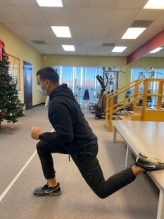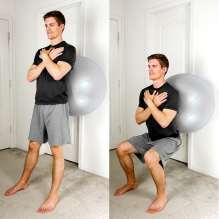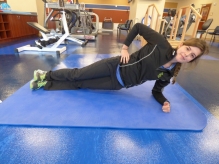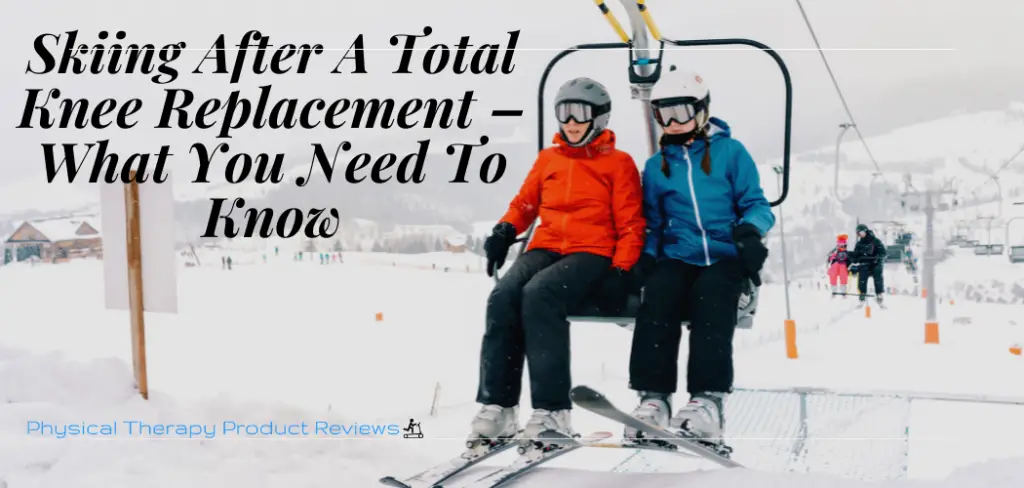 A total knee replacement can be an intimidating procedure. Yet, the vast majority of patients have significant improvements to the quality of life and recreational activities!
A total knee replacement can be an intimidating procedure. Yet, the vast majority of patients have significant improvements to the quality of life and recreational activities!
If returning to skiing is on your radar, you’ll likely have great success. There are a few things you’ll need to know about approaching this goal after a total knee replacement (TKR). Read below to learn more!
General Recovery Timeline After a Total Knee Replacement
- Walking assistance (walker, crutches, or cane) for 2-3 weeks.
- Light physical activity by 3 months post-op. At this point, you can begin skiing on easy groomers.
- Gradual progression to pre-surgical level sports begins at 6 months post-op.
FAQ About Returning to Skiing After a Knee Replacement
How long do I wait after a total knee replacement before going skiing?
Wait to begin skiing until at least 3 months post-op, upon the direction of your physical therapist or surgeon. Once you’ve been cleared to start, you’ll use a gradual progression to advance. Expect to work towards the pre-surgery level around 6 months post-op, but also know that some performance decreases are expected after a TKR.
What type of ski runs can you do?
Though you might’ve been doing black diamonds in your hay day, after a total knee replacement, you’ll want to start on the groomers.
Hit the slopes on days with soft fluffy powder and avoid rough weather with icy slick terrain.
Should I wear a brace while skiing?
You should not need to wear a brace while skiing. With a consistent strength and balance program and a gradual return to sport, your leg will be ready for the activity. You may wear a compression band as desired.
Do I need to warm up beforehand?
Yes! Before jumping in the snow, complete a 10-15 minute warmup to get your body ready. Think light squats, rear lunges, leg swings, and bunny hops.
Tips for Recovery:
- Maintain a healthy body weight: you’re more likely to have a better recovery and reduce wear on your artificial knee by maintaining healthy body weight.
- Keep the motivation: patients that stay positive and motivated during recovery have better results!
- Avoid high-impact sports: like jogging and contact sports, unless directed otherwise by your surgeon.
- Don’t lag on your physical therapy appointments! You will likely have plenty of exercises to complete at home, but attending a physical therapy clinic can also offer access to the equipment you wouldn’t otherwise have.
Communicate to your provider that you want to return to skiing, and they’ll be able to incorporate skiing-specific activities to help you get there (like the slide board, advanced balance training, and testing, shuttle plyometrics).
Get Ready for Ski season with the Following Exercises:
These exercises can begin after month 3 post-op, at the direction of your physical therapist.
Bulgarian Split Squats
 Stand one stride forward from a platform (you can use a staircase, chair, or couch). Place one foot back on the platform and, while maintaining your balance descend into a static lunge. Your front knee should not extend past your toes. Try to drop far enough that your front thigh becomes near parallel to the ground. Return to stand and repeat.
Stand one stride forward from a platform (you can use a staircase, chair, or couch). Place one foot back on the platform and, while maintaining your balance descend into a static lunge. Your front knee should not extend past your toes. Try to drop far enough that your front thigh becomes near parallel to the ground. Return to stand and repeat.
Advance this exercise by holding hand weights in each hand.
Swiss Ball Squats
 Place a Swiss ball against a flat wall and lean your back against it while standing. Step your feet forward slightly and hip-width apart. Descend into a squat, aiming to get your thighs parallel to the ground. Return to stand.
Place a Swiss ball against a flat wall and lean your back against it while standing. Step your feet forward slightly and hip-width apart. Descend into a squat, aiming to get your thighs parallel to the ground. Return to stand.
Advance this exercise by adding a resistance band around your knees.
Side Plank Lifts
 Lay down on your side, with your forearm propped under you and your feet stacked on top of each other. Lift your body into a straight line. Dip your hips back towards the ground, then return to the plank. Avoid any bending or twisting.
Lay down on your side, with your forearm propped under you and your feet stacked on top of each other. Lift your body into a straight line. Dip your hips back towards the ground, then return to the plank. Avoid any bending or twisting.
Advance this exercise by lifting your top leg about 6”.
Skiers Plyometrics
 Find an area clear of obstacles. Place a strip of tape on the ground and stand to one side of it, feet parallel to the line. In a small bunny, hop, jump to the other side of the tape by lifting both feet off the ground together. Jump to the other side. Repeat this exercise for speed, then complete it, action jumping back to front over the line.
Find an area clear of obstacles. Place a strip of tape on the ground and stand to one side of it, feet parallel to the line. In a small bunny, hop, jump to the other side of the tape by lifting both feet off the ground together. Jump to the other side. Repeat this exercise for speed, then complete it, action jumping back to front over the line.
Advance this exercise by completing it single-leg or expanding the width of your jump.
At the Gym:
- Try participating in low-impact conditioning exercises like aquatics, the rower, and the elliptical.
- At the gym, make regular use of the following machines: leg press, leg curls, leg extension.
How to Know You Are Ready to Ski After a Knee Replacement
Strength Test:
- Stand in front of a staircase with a few steps. Using your affected leg, take a big step up, skipping 1-2 stairs, and try not to use the handrail.
- Return to the start and repeat for 5 iterations.
Complete this strength test on the opposite side – does it feel the same?
You can also compare strength side to side using a leg press machine and completing a single leg press. Are you able to lift more weight on your unaffected side?
Balance Test:
- Stand on your affected leg and raise your other foot off the ground.
- Hold this position for 30 seconds.
- You should easily be able to complete this task with minimum sway.
Complete this balance test on the opposite side – does it feel the same?
Conclusion:
With a smart rehab program, you can return to skiing quickly after a total knee replacement. Keep your motivation up, your progression gradual, and you’ll be slicing snow all winter long!
Author Information:
Written By: Lisa Woolridge, DPT
After graduating from the University of Texas Health Science Center at San Antonio, Lisa served as a physical therapist in the Army. She treated orthopedic injuries in soldiers and family members, ran fitness testing clinics, and conducted wellness classes. Lisa left the military when she became a mother and remains involved in the medical field through freelance science writing and consulting.
References:
Dagneaux L, Boulez J, Degeorge B, Canovas F. Return to sport after total or unicompartmental knee arthroplasty. EFORT Open Reviews. 2017; 2(12):496-501.
Haslinger S, et al. Feasibility of ski mountaineering for patients following a total knee arthroplasty: a descriptive field study. International Journal of Environmental Research and Public Health. 2019; 16(9):1582.
Other Great Rehab Related Articles
GLP Weight Loss and Back Health: Effective Strategies and Insights
How to Stay Active After Cervical Fractures: Expert Tips and Advice
Dealing with Painful Stairs After Ankle Replacement Surgery
Walking After a Total Ankle Replacement: Tips for a Successful Recovery
Exercises While Non-Weight Bearing After Ankle Replacement: Elevation, AROM, Leg Raises, and More
Ankle Pain with Stairs: Causes and Home Treatment Options
Disclaimer: The information provided in this post is for educational purposes only. This is not a substitute for a medical appointment. Please refer to your physician before starting any exercise program.






